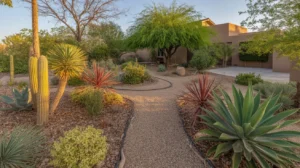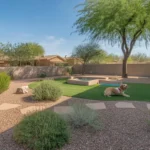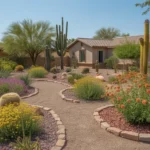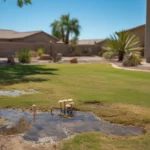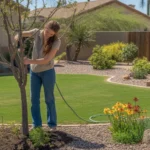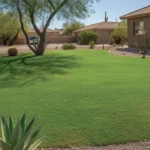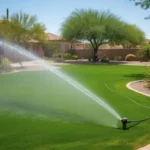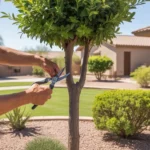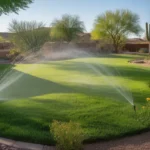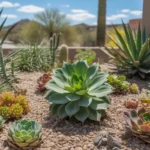As a Gilbert homeowner, creating a drought-tolerant yard is key to maintaining a beautiful landscape while conserving our precious water resources. With the right strategies and plant choices, you can design an outdoor space that’s both resilient and attractive, even during the driest months. In this guide, we’ll explore proven techniques to help your yard thrive while minimizing water usage.
Embrace Xeriscaping Principles
Xeriscaping is a landscaping approach that emphasizes water conservation through thoughtful design and plant selection. By incorporating xeriscaping principles into your Gilbert yard, you can significantly reduce water consumption without sacrificing visual appeal.
One key aspect of xeriscaping is grouping plants with similar water needs together, known as hydrozoning. This allows you to efficiently irrigate each zone based on its specific requirements. Consider creating distinct areas for low-water, moderate-water, and high-water plants to optimize your watering schedule.
Additionally, minimize the use of thirsty turfgrass and opt for drought-tolerant groundcovers, native grasses, or permeable hardscaping materials like gravel or decomposed granite. These alternatives not only conserve water but also add texture and interest to your landscape.
Select Drought-Tolerant Plants
When planning your drought-tolerant yard, focus on plants that are well-adapted to Gilbert’s arid climate. Native and desert-adapted species have evolved to thrive in low-water conditions, making them excellent choices for a water-wise landscape.
Some top picks for drought-tolerant plants in Gilbert include:
- Agave: These sculptural succulents store water in their thick leaves, allowing them to withstand prolonged dry spells.
- Palo Verde: Arizona’s state tree is known for its green bark and vibrant yellow blooms, providing beauty with minimal water.
- Red Yucca: With striking red flower spikes and grass-like foliage, red yucca adds a pop of color to dry landscapes.
- Texas Sage: This evergreen shrub boasts silvery leaves and purple flowers, thriving in full sun and low-water conditions.
When selecting plants, consider their mature size, sun exposure requirements, and overall compatibility with your landscape design. Group plants with similar needs together to create a cohesive and low-maintenance yard.
Implement Efficient Irrigation
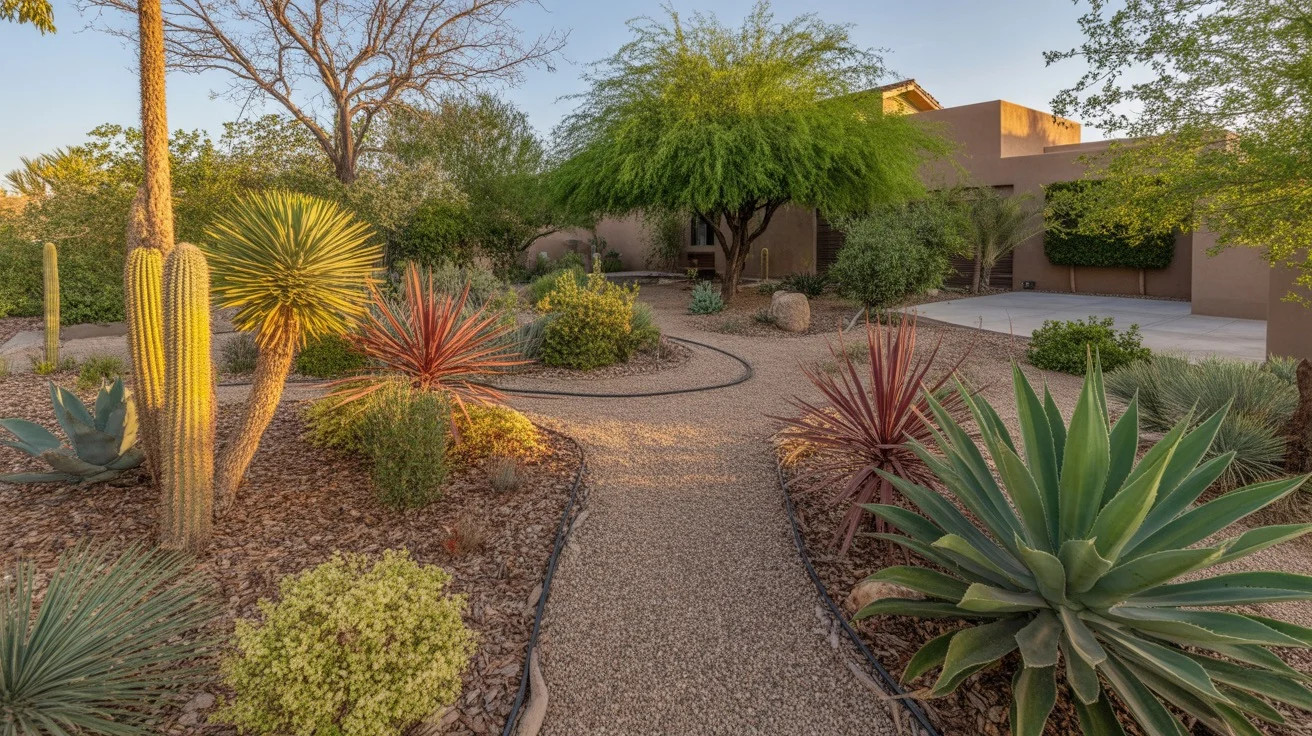
Efficient irrigation is crucial for maintaining a drought-tolerant yard in Gilbert. Traditional sprinkler systems often lead to water waste through evaporation and overspray. Instead, consider investing in a drip irrigation system that delivers water directly to the roots of your plants.
Drip irrigation allows for precise water application, minimizing evaporation and runoff. You can customize the system to meet the specific needs of each plant zone, ensuring that your landscape receives the right amount of water without excess.
Additionally, incorporate smart irrigation controllers that adjust watering schedules based on weather conditions and soil moisture levels. These devices can automatically reduce watering during cooler months or after rainfall, further optimizing your water usage.
Mulch Matters
Mulching is a simple yet effective strategy for conserving water in your Gilbert yard. By applying a layer of organic mulch around your plants, you can reduce evaporation, moderate soil temperatures, and suppress weed growth.
Opt for natural mulch materials like wood chips, bark, or shredded leaves. These materials break down over time, enriching your soil with organic matter and improving its water-holding capacity. Aim for a mulch layer of 2-3 inches deep, keeping it slightly away from plant stems to prevent rot.
In addition to its water-saving benefits, mulch adds a tidy and polished look to your landscape beds. It creates a cohesive backdrop that allows your drought-tolerant plants to shine.
Harvest Rainwater
While rainfall may be scarce in Gilbert, capturing and storing the water that does fall can significantly supplement your irrigation efforts. Consider installing a rainwater harvesting system to collect runoff from your roof and direct it to your landscape.
Rainwater harvesting can be as simple as placing rain barrels beneath your downspouts or as elaborate as installing underground cisterns. Collected rainwater can be used to water your plants during dry spells, reducing your reliance on municipal water sources.
In addition to harvesting rainwater, consider creating rain gardens or swales in your yard. These landscape features are designed to capture and infiltrate stormwater runoff, allowing it to slowly percolate into the soil and nourish your plants.
Practice Proper Maintenance
Proper maintenance is key to keeping your drought-tolerant yard looking its best. Regular pruning helps plants maintain their shape, promotes healthy growth, and reduces water stress. Remove dead or damaged branches promptly to conserve the plant’s energy and resources.
Monitor your plants for signs of distress, such as wilting or yellowing leaves, which may indicate a need for supplemental watering. Deep, infrequent watering encourages plants to develop deeper root systems, making them more resilient to drought conditions.
Keep an eye out for weeds that compete with your plants for water and nutrients. Remove them promptly to ensure your drought-tolerant plants have access to the resources they need to thrive.
Embrace the Beauty of a Drought-Tolerant Yard
Creating a drought-tolerant yard in Gilbert is not only an environmentally responsible choice but also an opportunity to showcase the unique beauty of desert-adapted plants. By embracing xeriscaping principles, selecting water-wise species, and implementing efficient irrigation techniques, you can design a landscape that thrives in our arid climate.
Remember, a drought-tolerant yard doesn’t mean a barren or uninviting space. With thoughtful plant choices and creative design elements, you can craft an outdoor oasis that’s both resilient and visually stunning. By taking a strategic approach to water conservation, you’ll be doing your part to protect our valuable resources while enjoying a beautiful and sustainable landscape in the heart of Gilbert.

